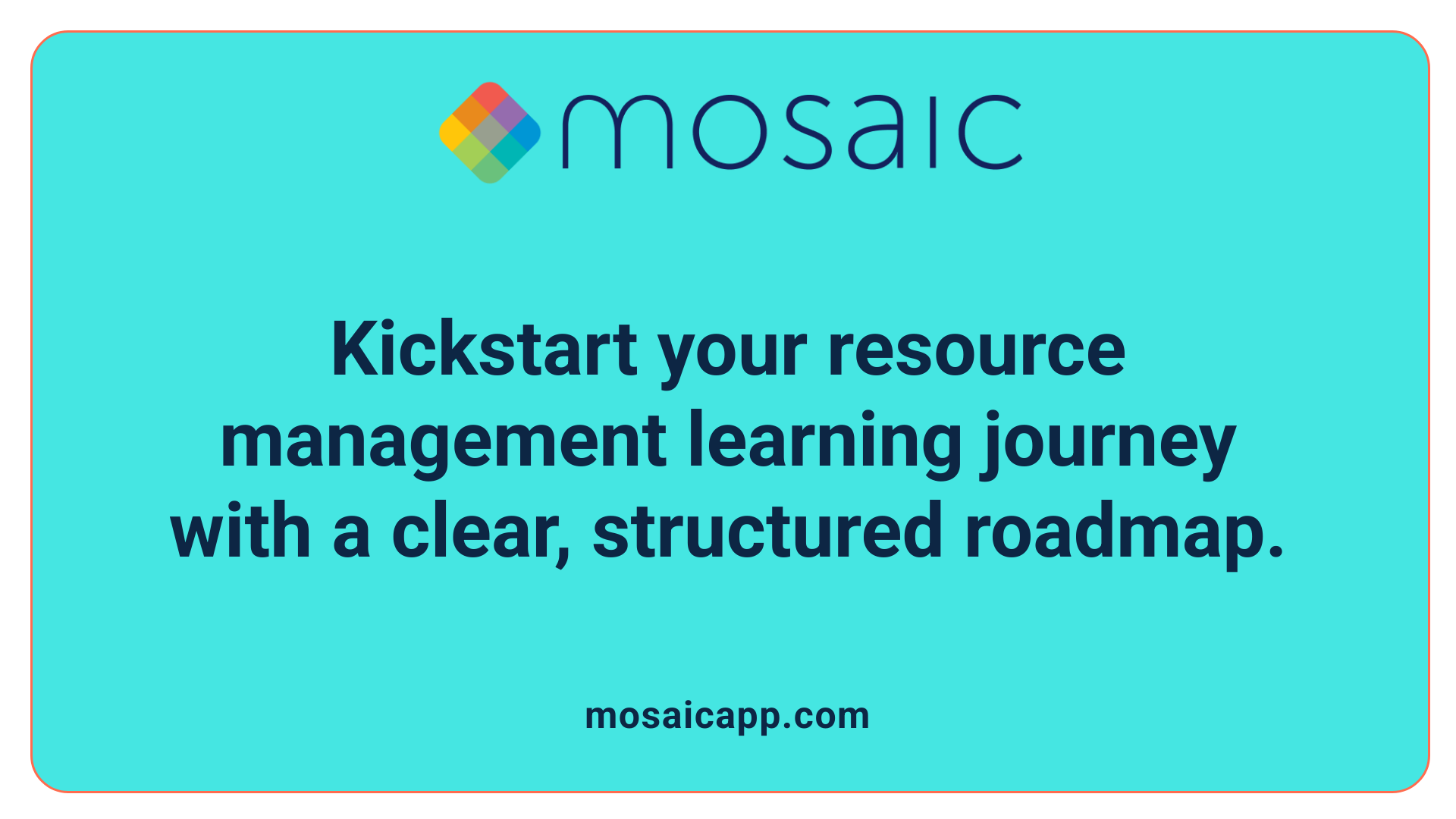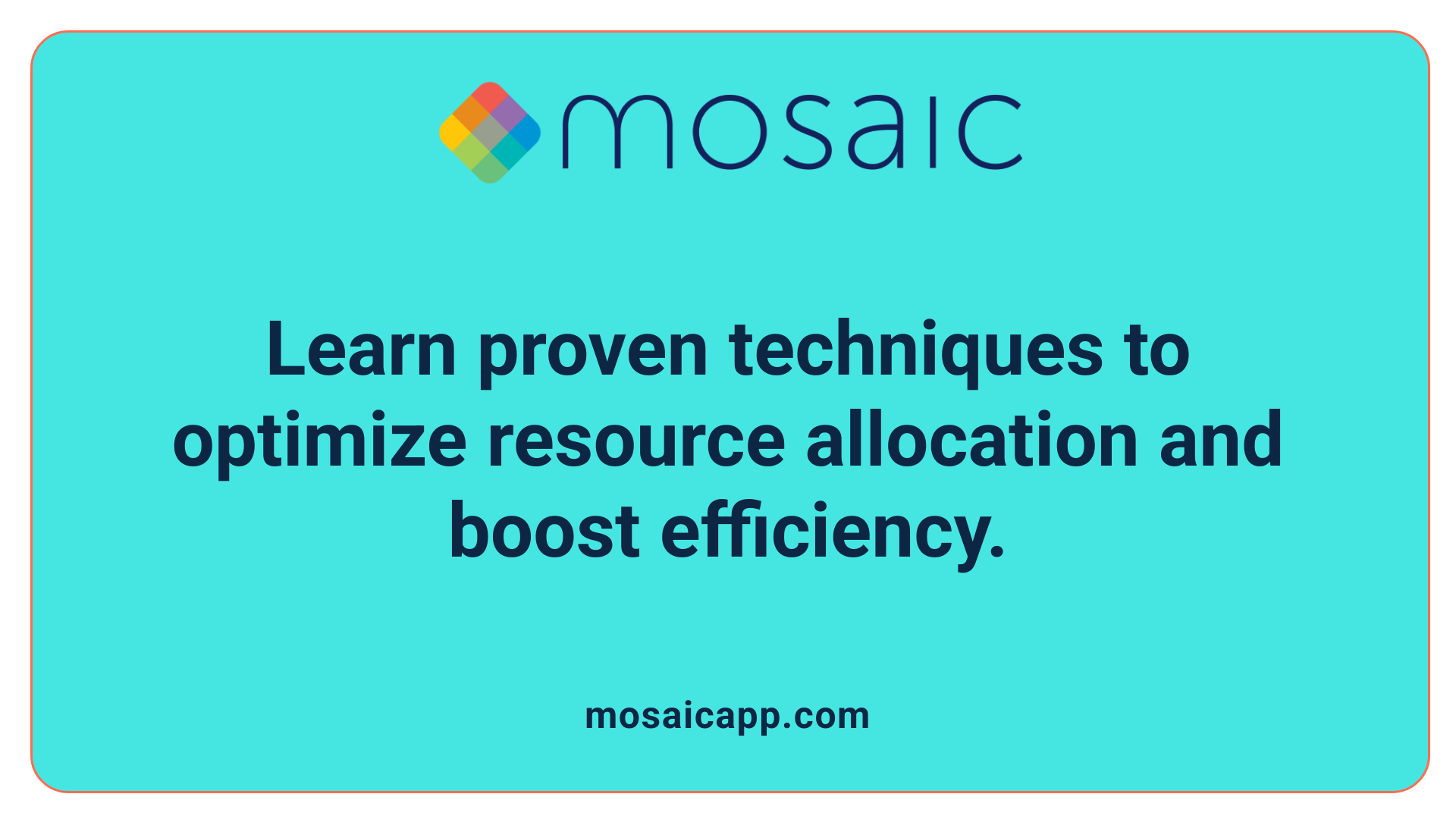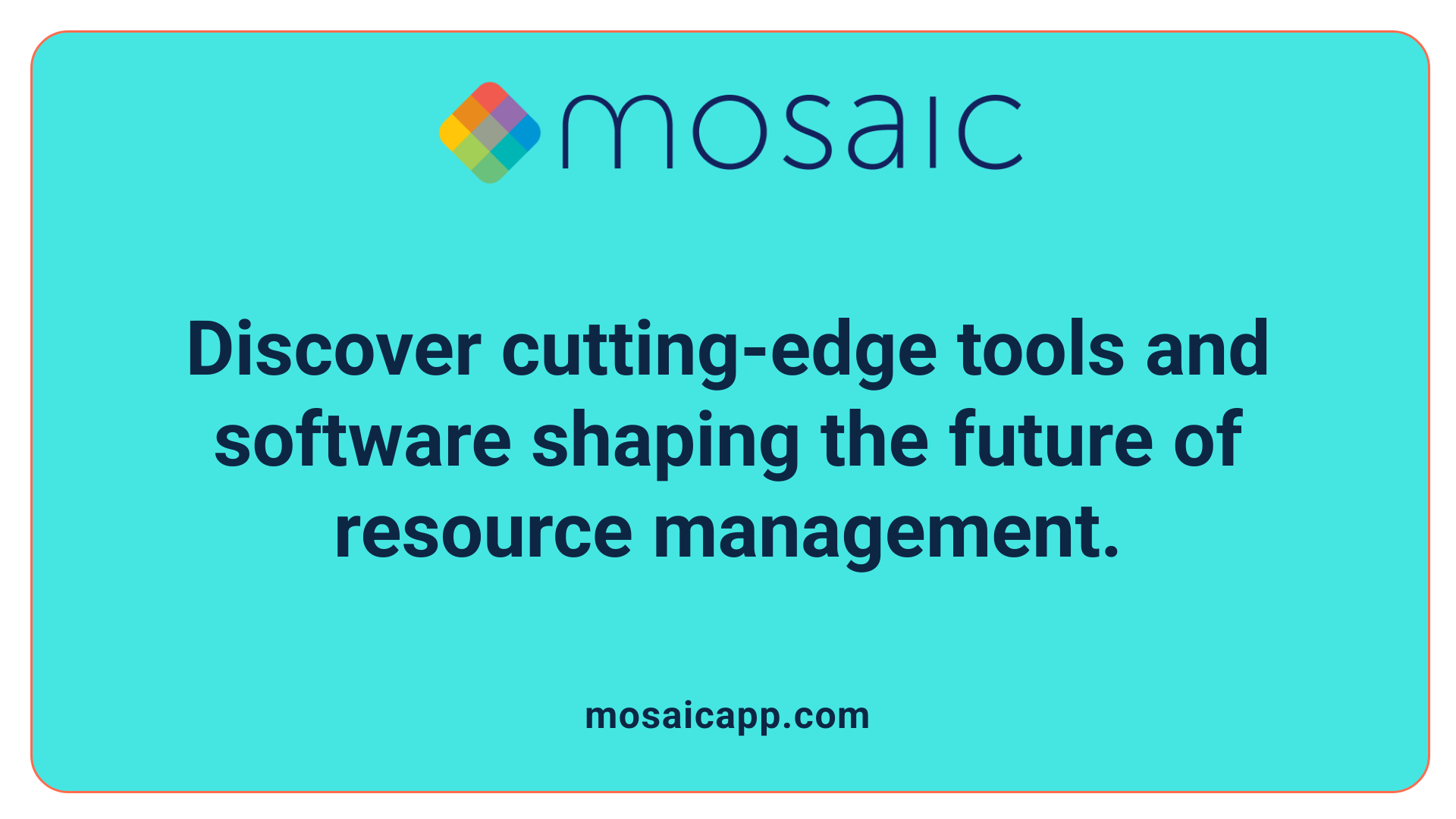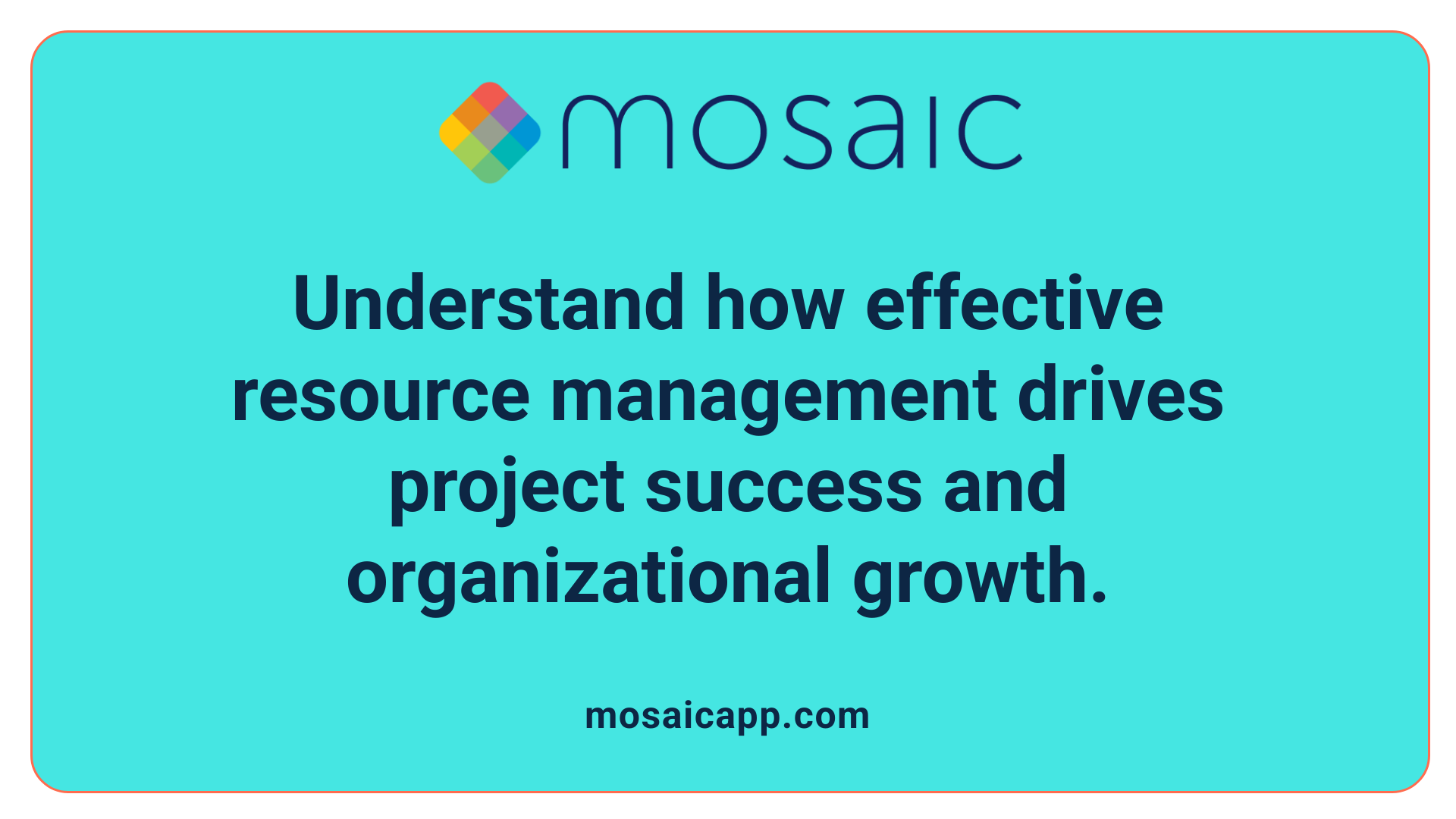Embarking on Your Resource Management Journey
In an ever-evolving business landscape, understanding the fundamentals of modern resource management is crucial for new professionals seeking to optimize organizational performance. This guide provides a comprehensive roadmap for beginners to navigate the key concepts, tools, and strategies essential for effective resource utilization and project success.
Understanding the Core Principles of Modern Resource Management
What are the basic concepts and fundamentals of modern resource management?
Modern resource management is about strategically planning, scheduling, and allocating various resources—such as human talent, technology, finances, and physical assets—to meet organizational and project objectives. It emphasizes an integrated approach that involves understanding different resource types and how they can be effectively utilized.
A fundamental aspect involves capacity planning and demand forecasting. This means assessing current resource availability and predicting future needs to prevent resource shortages or overallocation. Techniques like resource leveling and histograms are used to balance workloads, visualize resource usage over time, and avoid burnout or underuse.
To manage resources efficiently, organizations utilize responsibility assignment matrices and resource breakdown structures. These tools help clarify who is responsible for what, and how resources are distributed across projects or processes.
Effective resource management prioritizes stakeholder involvement, considers worker motivation, and promotes accountability. It aims to maximize productivity, reduce costs, and ensure that projects are completed on time. The ultimate goal is to create a comprehensive view of resource allocation, enabling informed decision-making and seamless coordination across various functions.
Key features of modern resource management techniques include:
Technique Description Purpose Resource Pooling Combining similar resources for easier management Increase flexibility and resource sharing Resource Allocation Assigning resources to specific tasks or projects Ensure optimal use and prevent conflicts Resource Leveling Adjusting project schedules to address over/underutilization Balance workloads and improve efficiency Histograms Visual tools showing resource usage over time Identify peaks and troughs in workload
Tools supporting resource management
Modern software solutions like Jira's ActivityTimeline or specialized resource management platforms help visualize timelines, track workloads, and support decision-making. These tools foster collaboration, provide financial forecasts, and generate reports that help in continuous optimization.
In summary, understanding resource types, planning capacity, and employing effective techniques enable organizations to make strategic decisions, foster productivity, and deliver projects successfully within budget and schedule constraints.
A Step-by-Step Roadmap for Starting Your Learning Journey

What is a step-by-step beginner roadmap for learning resource management?
Embarking on a beginner’s journey in resource management involves a clear, structured approach to understanding how to effectively manage various resources within a business or project. The process begins with grasping fundamental concepts such as different types of resources—including human, equipment, and material resources—and their classifications. Resources can be finite, like a specific budget or skilled personnel, or reusable, such as software tools or machinery.
Once familiar with these basics, learners should delve into key planning and organizational techniques. This includes understanding how to develop a work breakdown structure (WBS), employ resource pooling strategies, and execute resource allocation and leveling. These methods help in distributing resources efficiently and avoiding overallocation or underutilization.
The next step is exploring and selecting appropriate resource management software tools. Popular options like Jira with ActivityTimeline add-ons or Smartsheet enable users to create schedules, monitor workloads, and generate reports seamlessly. practical hands-on experience in these platforms enhances understanding and prepares learners to apply skills in real-world scenarios.
Practicing these concepts through exercises such as designing resource plans, tracking resource utilization, and solving scheduling conflicts consolidates knowledge. Simulated projects or real case studies can be particularly beneficial.
Finally, advancing your expertise through formal education and certifications, such as courses offered by the Resource Management Academy or related professional bodies, can validate your skills and open further career opportunities. Gaining certifications helps in staying current with industry standards and best practices.
Following this structured learning path ensures a comprehensive understanding of resource management fundamentals and prepares learners for practical application in various professional environments.
Effective Techniques for Resource Allocation and Improving Efficiency

What are effective techniques and strategies for resource allocation and improving efficiency?
Implementing efficient resource allocation requires a combination of strategic planning and utilization of advanced tools. Prioritizing tasks based on their importance and potential impact ensures that resources are directed toward initiatives that align with organizational goals. Techniques such as leveraging project management dashboards provide a clear visual overview of resource utilization, making it easier to monitor workload and identify bottlenecks.
Workload analysis plays a vital role in balancing human resources; it helps prevent employee burnout while maximizing productivity. By understanding capacity and workload demands, organizations can allocate tasks more evenly, ensuring no team members are overloaded or underutilized.
Utilizing real-time data through project management software allows for quick decision-making. This dynamic adjustment capability is essential for responding to unexpected changes, such as project scope revisions or shifting priorities. For example, real-time analytics can inform the reallocation of resources to high-priority tasks, minimizing delays.
Frameworks like cost-benefit analysis facilitate objective decision-making, helping determine which projects or tasks should receive attention based on their expected returns. Equity models also ensure fair resource distribution, fostering organizational harmony and ethical management.
In addition, early strategic planning, including setting clear goals and milestones, ensures that resources are allocated effectively from the outset. Continuous tracking through resource management tools and performance dashboards supports ongoing evaluation, helping managers adjust allocations proactively.
By combining these strategies—prioritization, technology-enabled monitoring, workload balancing, data-driven adjustments, and structured frameworks—organizations can optimize resource use. This integrated approach not only reduces unnecessary expenditure but also enhances overall productivity and project success.
Technique Description Purpose Prioritization Focusing on tasks with higher strategic value Ensuring alignment with organizational goals Project dashboards Visual tools for resource monitoring and management Providing real-time status updates and insights Workload analysis Assessing and balancing work distribution among team members Preventing burnout and optimizing team capacity Real-time data Using live data for quick decision-making Adapting to changing project conditions Frameworks (Cost-benefit, Equity) Applying structured approaches to decision-making Making balanced and ethical choices
Effective resource management is an ongoing process that benefits from the integration of strategic prioritization, technological tools, and analytical frameworks. Employing these techniques allows organizations to operate more flexibly, respond swiftly to challenges, and drive project success.
Tools and Software Transforming Modern Resource Management

What tools and software are commonly used in modern resource management?
Efficient resource management today depends heavily on specialized software that simplifies planning, scheduling, and resource utilization tracking. Various tools are designed to meet different organizational needs, from small teams to large enterprises.
Popular resource management tools include:
- Microsoft Project: Offers detailed project planning, Gantt charts, and resource allocation features.
- Asana: Focuses on task management and team collaboration with visual timelines and workload views.
- Trello: Uses a card-based system for task tracking and workflow visualization.
- Smartsheet: Combines spreadsheet familiarity with project management, providing automation and real-time collaboration.
Beyond these, other specialized solutions cater to complex needs:
Tool Name Main Feature Best For Resource Guru Capacity planning and workload management Small to medium-sized teams Float Real-time resource scheduling, scenario modeling Larger organizations requiring flexibility Saviom Capacity planning and automation Enterprise-level resource management Polaris PSA End-to-end project and resource management Professional services organizations
Platforms like Scoro, Hub Planner, and monday.com blend project management with financial and resource planning, offering automation and integration features to streamline workflows.
For teams using Atlassian products, Jira combined with Confluence supports detailed project tracking, workload analysis, and seamless integration with other tools. These platforms facilitate transparency, collaboration, and efficiency across various industries.
In summary, the landscape of resource management software is rich with options tailored for different organizational sizes and complexities. Choosing the right tool depends on specific needs such as capacity management, automation, team size, and industry requirements.
Educational Resources for Aspiring Resource Managers
For beginners eager to develop expertise in resource management, numerous educational resources are accessible online and through traditional channels. These resources aim to provide foundational knowledge, practical skills, and industry-recognized certifications.
A wide array of online courses is available on platforms such as Udemy, Pluralsight, Alison, eCornell, and PDUnow. These courses cover essential topics like resource planning, estimating, acquisition, and management aligned with frameworks such as PMBOK?. Webinars and interactive guides offer real-world insights, allowing learners to understand best practices and common challenges.
Textbooks and guides further deepen theoretical understanding. Many textbooks focus on core principles of resource allocation, scheduling, and optimization techniques. Industry certifications like PMP (Project Management Professional), PRINCE2, and RMCP? (Resource Management Certification Program) validate skills and enhance career prospects.
Additionally, open educational resources (OER) offer free access to extensive learning materials. Providers like BCcampus OpenEd, MERLOT, OER Commons, and the Open Textbook Library host free textbooks, courses, and modules on related subjects such as human resource management, organizational behavior, and strategic planning. These materials are ideal for building a solid foundation.
The variety of resources caters to different learning styles and professional needs, from basic introductory courses to advanced certifications. They promote practical understanding, soft skill development, and strategic thinking, making them suitable for professionals across industries.
Using these digital and open tools, aspiring resource managers can acquire the necessary skills to manage both human and non-human resources effectively, ultimately supporting organizational success and strategic growth.
Resource Type Examples & Focus Areas Additional Notes Online Courses Udemy, Pluralsight, Alison, eCornell, PDUnow Cover resource planning, management, advanced techniques Webinars & Guides Industry webinars, practical management guides Offer current trends and real-world strategies Textbooks Core principles, management practices Deep dive into foundational knowledge Industry Certifications PMP, PRINCE2, RMCP? Recognized qualifications for career advancement Open Educational Resources BCcampus, MERLOT, OER Commons, Open Textbook Library Free access to textbooks and courses for learners
Overall, these resources form a comprehensive toolkit, enabling aspiring managers to build both theoretical understanding and practical skills for effective resource management.
Resource Management’s Role in Project and Organizational Success

How does resource management play a role in project and organizational contexts?
Resource management is a fundamental process that ensures businesses utilize their assets efficiently. It involves planning, allocating, and monitoring both human and non-human resources like personnel, technology, and finances. This process aligns resources with strategic objectives, preventing wastage and avoiding overload or underutilization.
In project contexts, resource management facilitates creating a clear picture of what is needed—such as skills, budget, and time—to meet deadlines and deliver quality results. It helps project teams prioritize tasks and balance workloads, which improves productivity and increases the likelihood of success.
At an organizational level, resource management supports long-term planning. By understanding capacity and current allocation, companies can forecast future needs, develop strategies, and adapt quickly to market changes. This flexibility enhances overall efficiency and maintains competitiveness.
Effective resource management also reduces delays caused by resource conflicts or shortages. It streamlines workflows, enables better decision-making, and provides transparency into resource demand and utilization. Ultimately, it contributes to delivering projects on time and within budget while fostering an adaptable, resilient organization.
How does resource management improve visibility into resource demand and capacity?
Good resource management tools and practices offer detailed insights into current and future resource needs. Through dashboards and reports, managers can see which resources are overburdened or underutilized.
This visibility supports more accurate scheduling and forecasting, allowing organizations to adjust plans proactively. When demand exceeds capacity, resources can be reallocated or additional resources can be acquired before problems arise.
Conversely, awareness of excess capacity helps in redeploying resources to other projects or initiatives, maximizing overall productivity.
How does resource management support scheduling, forecasting, and decision-making?
Effective resource management provides the data and tools necessary for making informed decisions. By knowing the availability and skillsets of team members, managers can schedule tasks more efficiently, reducing downtime and bottlenecks.
Forecasting becomes more reliable when resource plans incorporate current utilization rates and future needs, helping to avoid surprises.
Decisions regarding project scope, timelines, and resource investments are better grounded when based on comprehensive resource data, leading to optimized outcomes.
How does resource management prevent conflicts and streamline workflows?
By clearly tracking resource allocation, potential conflicts—such as double-booking or resource shortages—are identified early. This proactive approach avoids delays and misunderstandings.
Resource leveling techniques balance workloads, preventing burnout and ensuring that no resource is overwhelmed or idle.
Streamlined workflows result from aligning resources with task priorities, enabling teams to work more cohesively and efficiently.
How does resource management contribute to project success and organizational agility?
When resources are well-managed, projects are more likely to be completed on time and within budget, directly impacting success rates.
Additionally, resource management provides the flexibility needed to adapt to changing project scopes or unexpected challenges, making organizations more agile.
This dynamic capability supports quicker decision-making and fosters a culture of continuous improvement, positioning organizations to seize new opportunities swiftly.
Foundations of Human Resource Management and Organizational Practices
What are the foundational principles of human resource management and organizational resource practices?
Human Resource Management (HRM) is built on core functions that help organizations attract, develop, and retain talent to achieve strategic goals. These functions include recruitment, performance management, learning and development, and succession planning.
Recruitment and selection ensure that the right talent is brought into the organization. Performance management involves regular evaluation of employee work to support growth and organizational objectives.
Learning and development focus on continuous employee training and skills enhancement, vital for adapting to changing business needs. Succession planning prepares the organization for future leadership and operational continuity.
Building a positive organizational culture and fostering employee engagement are essential aspects. HR practices aim to motivate staff and create a work environment that encourages productivity and satisfaction.
Using HR information systems and data analytics plays a significant role in modern HRM. These tools support decision-making, help track HR metrics such as turnover and performance, and facilitate data-driven improvements.
Aligning HR strategies with overall organizational goals ensures that workforce capabilities support long-term growth. Key principles include legal compliance, wage equity, effective communication, and fairness in evaluation processes.
Overall, effective HRM enhances organizational performance by optimizing the workforce, promoting fair treatment, and leveraging technology for continuous improvement. These practices are fundamental for any organization seeking sustainable success.
Function/Aspect Purpose Additional Details Recruitment Attract talent Focus on skill fit and cultural alignment Performance Management Maximize productivity Regular reviews, feedback, goal setting Learning & Development Skills growth Training programs, professional development HR Information Systems Data management HRIS platforms like BambooHR or SAP Data Analytics Informed decisions Tracking HR metrics and trends Organizational Culture Employee engagement Values, environment, leadership practices
Understanding these foundational elements helps organizations build resilient, motivated, and aligned workforces capable of maintaining competitive advantages in their industries.
Achieving Organizational Excellence Through Resource Optimization
What are the benefits of effective resource management and how can organizations achieve them?
Effective resource management brings multiple advantages to organizations. It leads to increased productivity by ensuring that employees and tools are utilized efficiently. Cost savings are also a significant benefit, as better planning reduces waste and avoids unnecessary expenses.
By properly allocating resources, organizations can improve project outcomes and meet deadlines more consistently. This also results in higher customer satisfaction, as projects are completed on time and to a high standard.
Another critical benefit is enhanced employee morale. When workloads are balanced and burnout is prevented, staff remain motivated and engaged. Visibility into resource availability and skills allows managers to make strategic decisions, forecast future needs, and adapt quickly to changes.
To achieve these benefits, organizations must adopt strategies such as detailed planning, regular monitoring, and continuous process优化. Utilizing resource management tools like scheduling software can streamline the process, while techniques such as resource pooling, allocation, and leveling help optimize usage.
In summary, effective resource management supports not only current operational demands but also sustainable growth and strategic success. It ensures that resources are aligned with organizational goals, fostering ongoing improvement and competitive advantage.
Your Path to Mastery in Resource Management
Equipped with foundational knowledge, practical techniques, and the right tools, beginners can effectively navigate the complex world of modern resource management. Ongoing education, certification, and active application of best practices will set the stage for becoming a valuable asset in any organization. Embrace the journey, stay current with industry trends, and continuously seek opportunities for improvement to harness the full potential of resource management.

